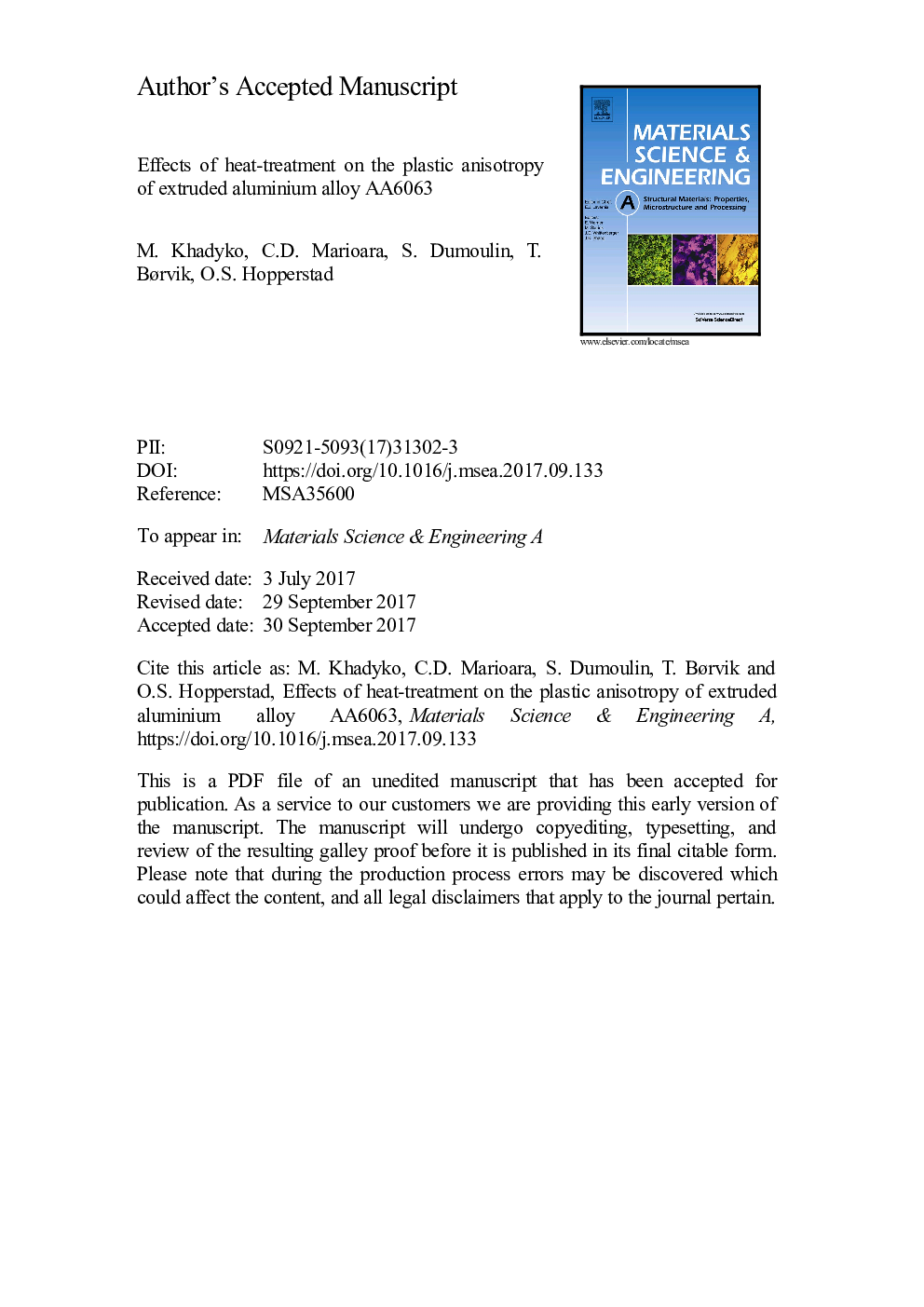| Article ID | Journal | Published Year | Pages | File Type |
|---|---|---|---|---|
| 5455115 | Materials Science and Engineering: A | 2017 | 39 Pages |
Abstract
The plastic anisotropy of aluminium alloys is known to depend not only on the crystallographic texture but also on the heat-treatment, and this effect has been studied on various alloys both experimentally and numerically. However, the 6000 series of aluminium alloys is not broadly represented in these studies. In this work, an extruded profile of the AA6063 alloy was investigated. Electron backscatter diffraction (EBSD) measurements revealed a strong cube crystallographic texture with a minor Goss component, which is typical for recrystallized aluminium alloys. The plastic anisotropy was studied by uniaxial tension tests in different material directions, using digital image correlation to measure the displacement field and thus to calculate the strain field. The tensile specimens were heat-treated to three different tempers: T6, T7 and O, in addition to the as-received T1 condition. Transmission electronic microscopy (TEM) was used to characterize the precipitate structure of the heat-treated material. A crystal plasticity finite element model of the tensile test was created and calibrated using some of the experimental data. The comparison of the experimental stress-strain curves, strain ratios and flow stress ratios with their simulated counterparts revealed that the crystallographic texture is dominating the anisotropy in all tempers. The accuracy of the CP-FEM predictions varies for different material orientations, and, in general, the simulated material exhibits a sharper anisotropy than the real material. The effect of the heat treatment on the anisotropy is found to be minor compared with the texture effect.
Related Topics
Physical Sciences and Engineering
Materials Science
Materials Science (General)
Authors
M. Khadyko, C.D. Marioara, S. Dumoulin, T. Børvik, O.S. Hopperstad,
